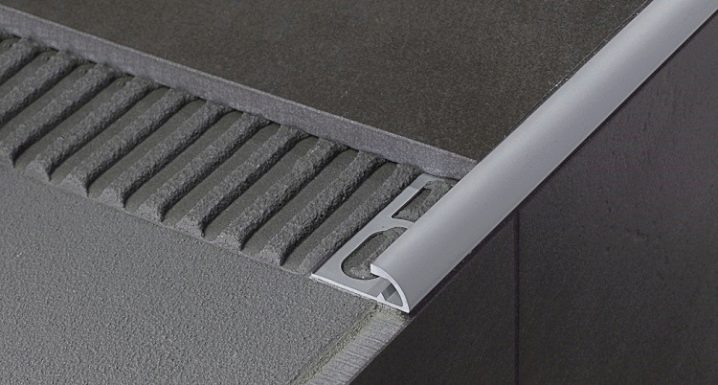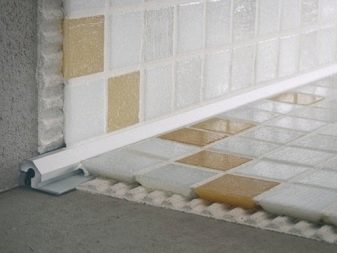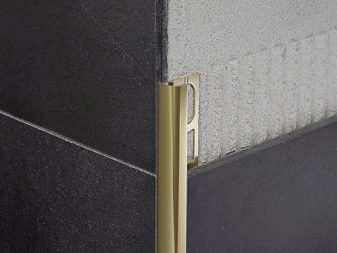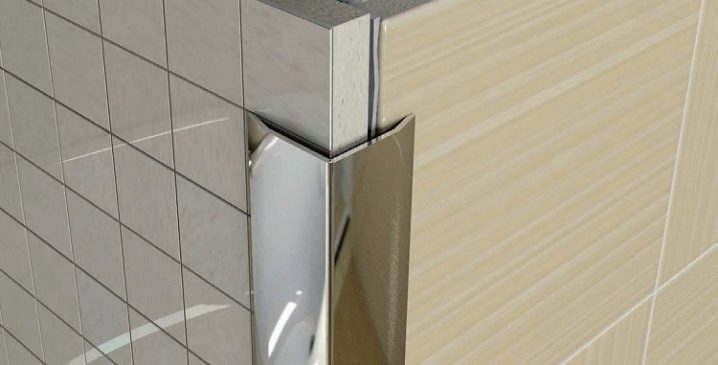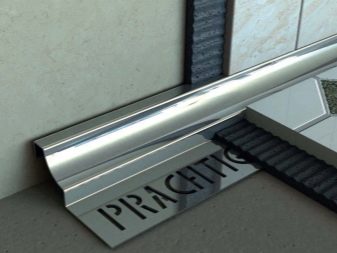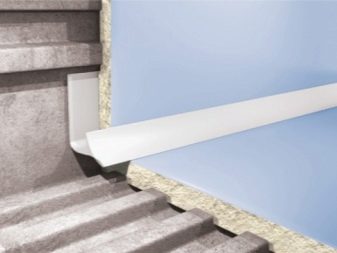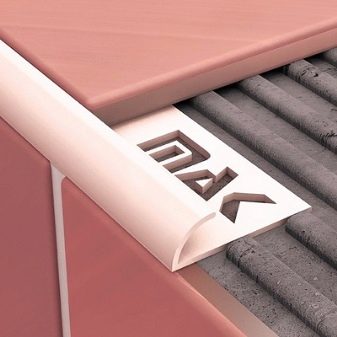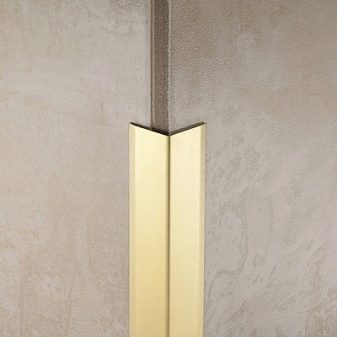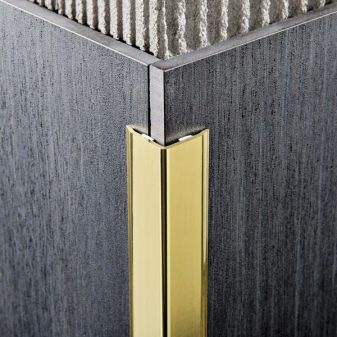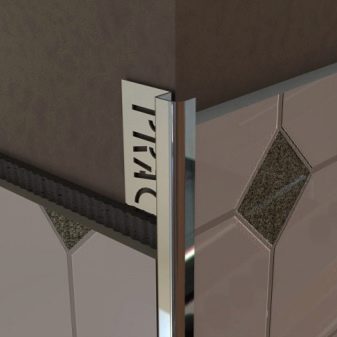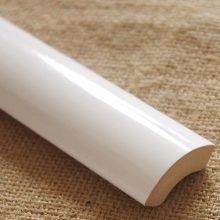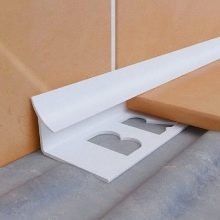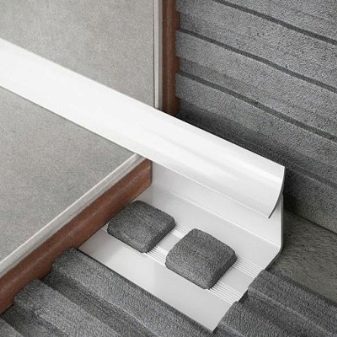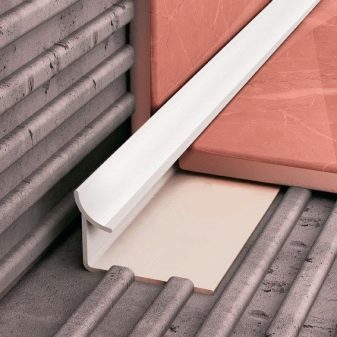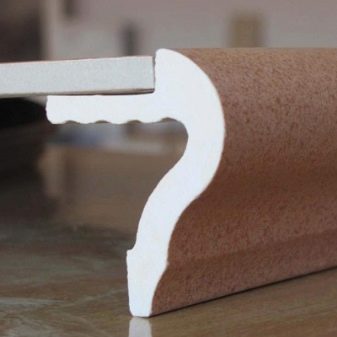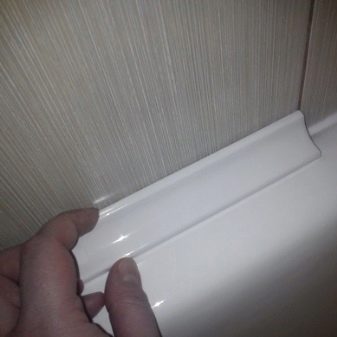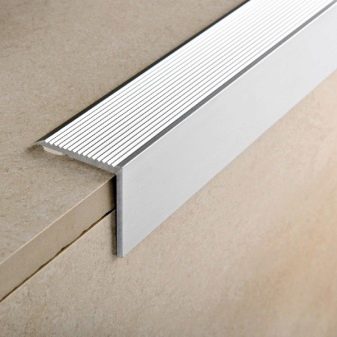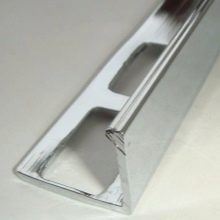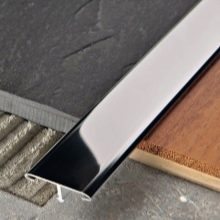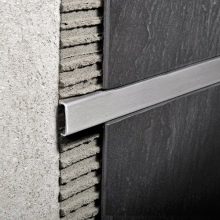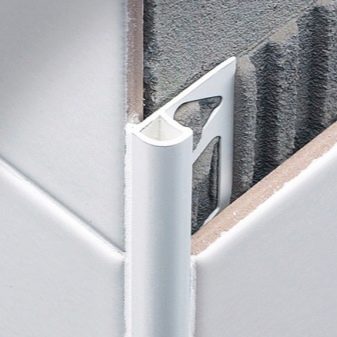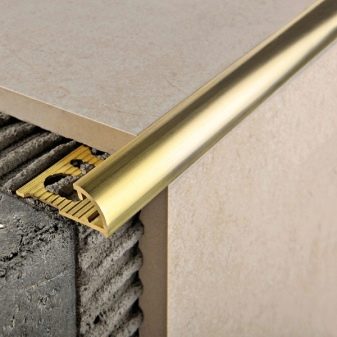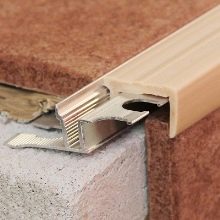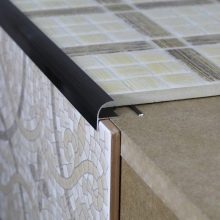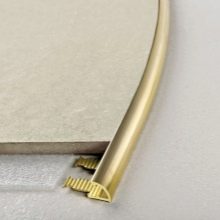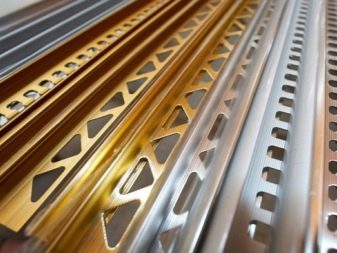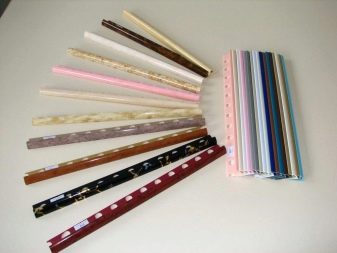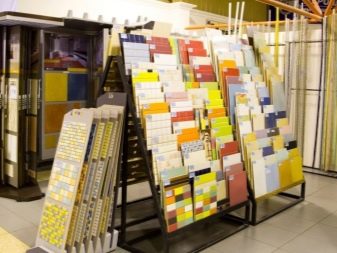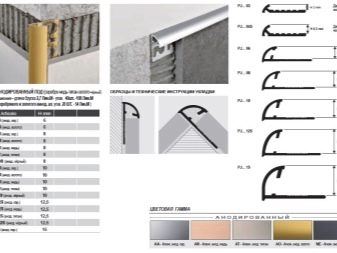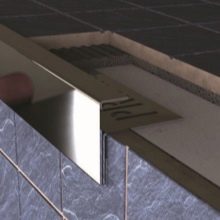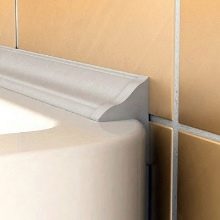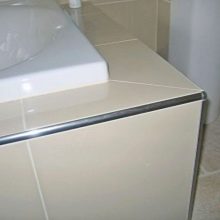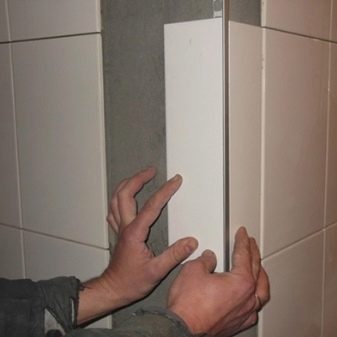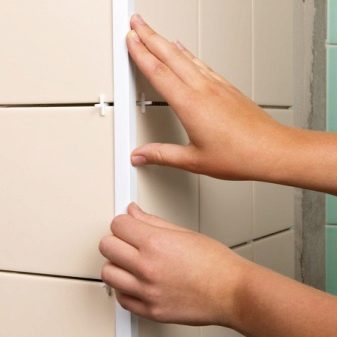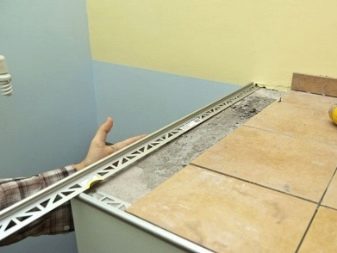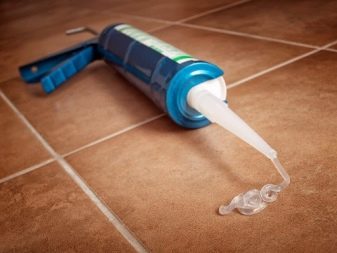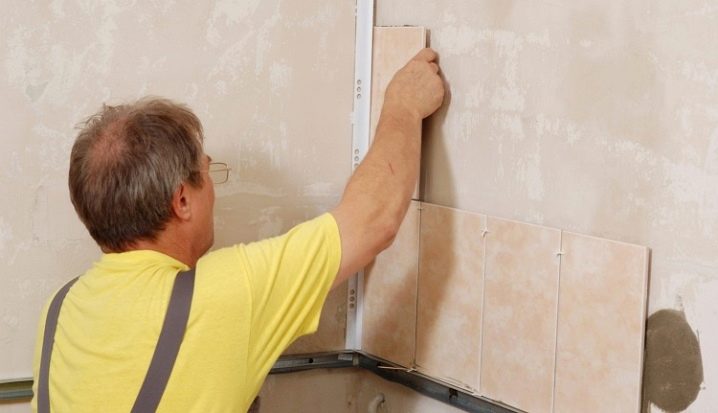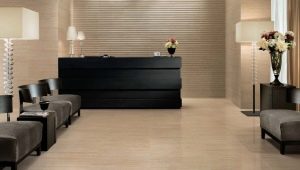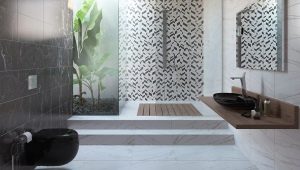How to choose a corner for the tile?
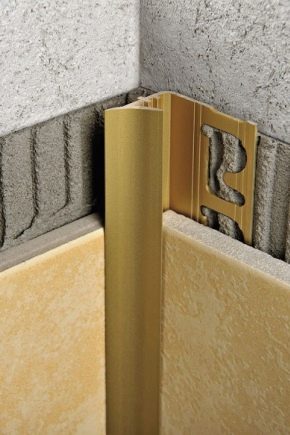
Repair in the bathroom is not an easy task that requires a huge amount of effort and material investment. Everyone wants to have a beautifully decorated room with high-quality tile laying. In order for the tile to look aesthetically pleasing and attractive, it is necessary to use corners that allow the material to last much longer and help create a neat appearance of the room.
In order to choose the most suitable option, it is necessary to take into account not only the characteristics of various profiles, but also the interior, since the corners must be part of the overall design.
It is important to remember that it is best to acquire the option, the shade of which will look most attractive with the color design of the room.
What is it needed for?
Corners for tiles are the material for finishing the apartment, which allows you to give the interior aesthetics and completeness. With the help of them you can make the design of the joints in difficult areas more accurate, they are used both during the laying of materials and after the final work (over the lining). And they are also able to give completeness to the design of the room and make it much more beautiful.
It is worth noting the advantages of the corner:
- Allows you to make complex geometric surfaces. Most often, the profiles bend without any labor.
- Masks irregularities and roughness on the edges of the tile. If you make a cut with the help of a corner, it will turn out neat and beautiful. This allows the interior to be finished, making it more stylish.
- It does not allow moisture to get into the joints, helps in the fight against the formation of mold and fungus.
- Prevents a variety of injuries associated with slippery floors (laminate or slippery tiles). Quite often, people slip and get injured due to the raw part of the tile.
Profile relieves the owner from experiences and dangers.
Kinds
The corner helps to shape corners, joints, difficult surfaces, places where the plumbing connects to the wall and so on. There are external and internal corners.
Exterior most often used, making out the projections of the walls when facing the bathroom. Its use is extremely important, since this part of the coating is subjected to constant mechanical stress. If you close the sharp ends of the tiles with a corner, it will help eliminate the danger to the owners. In this case, the product will also perform a protective function.
External corners are usually mounted in the process of laying tile or on the finished coating. And also they protect against finishing.
Internal is used to arrange the corner joints of the tile., if adjacent planes intersect (walls and ceiling), as well as the places in which the shower stall and wall connect. Such corners have concave and rounded shapes and do not allow moisture to enter the seams between the tiles.
From the point of view of design, profiles can be divided into two groups:
- Decorative Items can have a variety of colors and shapes. It depends on the style.
- Functional products are the main group.
They are characterized by increased reliability, better stability and practicality.
If a person just wants to decorate the room and add something original and interesting to the design, you should choose decorative profiles that will help make the design more unique.
If there is a need to use products only to protect the tile, you can purchase a functional one. It is worth remembering that no matter what profile the owner chooses, it is necessary to choose the product of the correct shade so that it does not spoil the overall picture of the interior.
Materials
Corners are made of various materials.
Metal (aluminum, stainless steel, brass) It is universal, as its color will perfectly fit into any color design. It also combines well with various structures of the room, made of metal (shower and other plumbing). Brass corners are pretty heavy. They are used for bulky tiles. Stainless steel products are extremely light, durable, durable and resistant to corrosion.
The corners made of metal alloys are usually coated with paint (gold or silver).Some options are chrome, brass or nickel plated.
This allows materials to be universally suitable for a variety of interiors.
PVC corner has a large number of positive qualities. It is durable, lightweight, has a waterproof ability. There are many colors, so everyone can choose exactly what is suitable for a specific design of the room. Most often, PVC corners are decorative.
Ceramic corners are one of the best options for those who need to make an aesthetically holistic interior. Most often they are purchased as part of a tile collection.
Comparing the corners of different materials, you can see that the metal is the most durable, and PVC and polyethylene have the least service life.
Metal products also guarantee tightness.
Plastic products have a number of advantages: they are easy to install and have a low price. But due to moisture, it can deteriorate in a few years. Plastic is a very affordable material that is quite easy to assemble, flexible and resistant to mold and fungus.
The advantages of ceramic corners include high strength and water resistance, low thermal conductivity and perfect appearance for a long time. Disadvantages: high prices, installation complexity.
Silicone sealant is used when the joint is not too wide.. During the operation may lose its aesthetic appearance and look careless.
The molding is a disguise for the joints of materials that differ in color and texture.
And he also helps to create compositions on any surface and is able to hide defects.
It should be noted, and the disadvantages of various materials:
- The profiles, made of white plastic, after some time of operation begin to lose their whiteness and become yellow. It is recommended to purchase dark or multi-colored elements.
- Installation of ceramic products is quite difficult, as in the process you should handle them as carefully as possible so as not to damage.
- In order to preserve the brilliance and shine of chrome-plated profiles for a long time, do not install them on the surface, which is often touched.
- When mounting angles made of metal, it is necessary to observe perfect evenness, because it is impossible to correct anything after installation.
Sizes and shapes
The elements most often have dimensions of 7, 9, 11 mm and a length of 2.5 m. On one side of the product there is a groove for the tile, while the other performs the function of decorating and protecting the tile from various external influences.
Different U-shaped, T-shaped, L-shaped and H-shaped types:
- L-shaped - angular. It is used where vertical and horizontal coatings are combined.
- T- or N-shaped - the dividing insert joining a floor covering at one level.
- U-shaped used in the process of finishing work.
Design and colors
Outside profiles you can see a huge range of colors. In order for the interior to be more attractive and aesthetic, it is necessary to select corners for tile shades. That is why the most commonly used products are white, since it is universal and suitable for any design.
If the owner wants to add something interesting and unique to the interior, you should pay attention to the plastic profiles. If you need to make the design a little nobler, more refined and more presentable, you need to use ceramic products. For rooms decorated in retrostyle, the best option would be a brass corner.
With the help of corners of various colors and shades you can perform an example of contrast, which is actively used when decorating rooms. This effect is ideal for the classical or modern stylistic direction.
Baked Milk Tint allows corners to give the room a more delicate and original look. He is great suitable for light colored tiles and makes any interior stylish and interesting.
Black color is the best option for a tile of dark shades, as it adds solidity to the room. He is pretty is practical and is suitable for rooms whose design is decorated in dark colors.
The room, which is decorated in dark shades, fit the corners of the color of bronze. Bronze products have a presentable and impressive appearance and make the interior more aesthetic and stylish.
Ceramics can be painted silver or gold. Such corners will look most advantageous in any interior. There is a huge selection of products, so you can easily choose what will imitate the design of the tile.But also the profile can have its own, original and interesting pattern or ornament that will complement the interior.
The production of plastic materials allows you to choose something for a particular design of the room from a variety of colors.
The surfaces of metal profiles can be painted in a variety of colors, but most often imitations of gold, platinum and silver are used.
Tips for choosing
In order to choose a decent corner, when going to the store you need to take a sample of the tile. Thus, a person will quickly be able to choose a profile that best fits in color design. But also pay attention to size. To choose the right size you need to know the thickness of the tiles.. It should be fairly tight to enter the corner, which, in turn, should not rise too much above its surface. It is important to know whether the whole or cropped tile will be placed on the edge of the corner.
Every corner has its own label. Drawing attention to it, you can navigate by comparing the number with the thickness of the tile used in the design.
There are three types of hardness thresholds: hard, semi-rigid and soft. Given the complexity of the architecture, you can purchase the best option. Plastic products are easy to cut and are perfect for curvilinear and other geometric designs. Metal profiles fit geometrically clear and straight spaces.
To find out exactly which corner for the bathroom is needed, you should consider a few nuances:
- If the gap between the wall and the bathroom is quite wide, you need to use a plastic border having the shape of a corner.
- It is important to know about the material from which the bathroom is made, as the acrylic bath should be purchased acrylic rim.
- For a room that is finished with plastic panels, it is better to buy a plumbing profile of a similar material.
- Corners for steps should be made of metallic materials. The use of plastic products is strictly prohibited.
Installation Features
It is quite easy to learn how to make the installation of corners for tiles.
There are several installation methods:
- Tile installation. This option is suitable for people who have made repairs in the bathroom for a long time,but we wanted to reinforce the tiles a little and make the interior of the room finished.
- The second option is gluing the corner directly during installation. In this situation, the corner must be bent in a special way and bricked up under the row of tiles, which is the last. This design eliminates the corners of mechanical stress and allows them to hold tight.
Most often, inexperienced slavers can glue the edging with each other in order to avoid problems associated with linking the joints of one profile with another. Previously, they fill the structure with a large amount of sealant. Such actions are erroneous, as this will lead to the fact that the damage of the material, including tiles, will begin from the corners.
To set the corners in the corners, trim them from each edge to about 45 degrees.. In this case, in the docking places there will be nothing superfluous and the inner corners will be able to “merge” together.
When working with elements made of plastic, you should use a silicone sealant or glue that is resistant to moisture and moisture. Similar compositions can be purchased at any hardware store.
If in the bathroom most of the time, the air temperature and humidity are high, then it is better to buy a rubber-lined corner. It is able to provide better sealing over many years of operation.
Installation of profiles is not too difficult, especially easy to lay corners made of plastic and metal.
These products are a very important component of the repair, which affects the aesthetics of the interior of the room and has a practical purpose. There are both advantages and disadvantages in the use of profiles, but if you correctly select and assemble the elements, the owner is unlikely to face any problems. Analysis of the information will allow you to make the necessary choices and decide on a wide variety of products.
How to install a corner with your own hands, see the next video.
